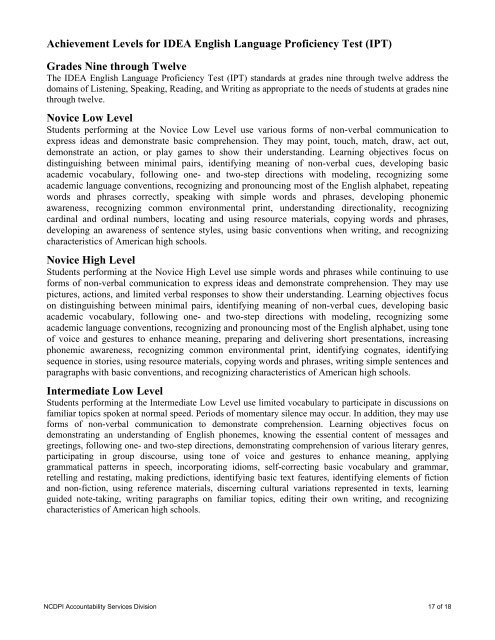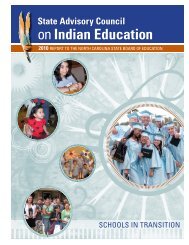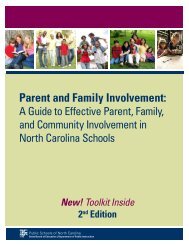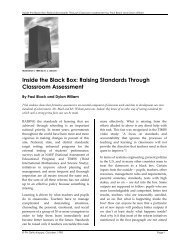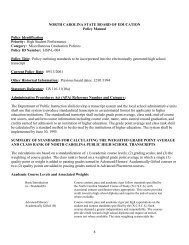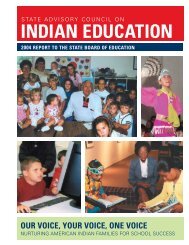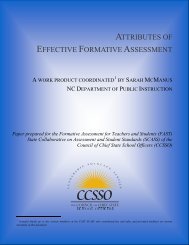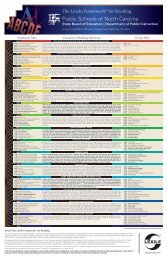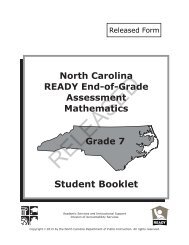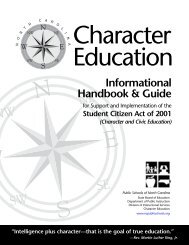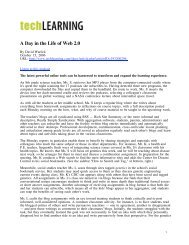Achievement Levels for IDEA English Language Proficiency Test (IPT)
Achievement Levels for IDEA English Language Proficiency Test (IPT)
Achievement Levels for IDEA English Language Proficiency Test (IPT)
Create successful ePaper yourself
Turn your PDF publications into a flip-book with our unique Google optimized e-Paper software.
<strong>Achievement</strong> <strong>Levels</strong> <strong>for</strong> <strong>IDEA</strong> <strong>English</strong> <strong>Language</strong> <strong>Proficiency</strong> <strong>Test</strong> (<strong>IPT</strong>)<br />
Grades Nine through Twelve<br />
The <strong>IDEA</strong> <strong>English</strong> <strong>Language</strong> <strong>Proficiency</strong> <strong>Test</strong> (<strong>IPT</strong>) standards at grades nine through twelve address the<br />
domains of Listening, Speaking, Reading, and Writing as appropriate to the needs of students at grades nine<br />
through twelve.<br />
Novice Low Level<br />
Students per<strong>for</strong>ming at the Novice Low Level use various <strong>for</strong>ms of non-verbal communication to<br />
express ideas and demonstrate basic comprehension. They may point, touch, match, draw, act out,<br />
demonstrate an action, or play games to show their understanding. Learning objectives focus on<br />
distinguishing between minimal pairs, identifying meaning of non-verbal cues, developing basic<br />
academic vocabulary, following one- and two-step directions with modeling, recognizing some<br />
academic language conventions, recognizing and pronouncing most of the <strong>English</strong> alphabet, repeating<br />
words and phrases correctly, speaking with simple words and phrases, developing phonemic<br />
awareness, recognizing common environmental print, understanding directionality, recognizing<br />
cardinal and ordinal numbers, locating and using resource materials, copying words and phrases,<br />
developing an awareness of sentence styles, using basic conventions when writing, and recognizing<br />
characteristics of American high schools.<br />
Novice High Level<br />
Students per<strong>for</strong>ming at the Novice High Level use simple words and phrases while continuing to use<br />
<strong>for</strong>ms of non-verbal communication to express ideas and demonstrate comprehension. They may use<br />
pictures, actions, and limited verbal responses to show their understanding. Learning objectives focus<br />
on distinguishing between minimal pairs, identifying meaning of non-verbal cues, developing basic<br />
academic vocabulary, following one- and two-step directions with modeling, recognizing some<br />
academic language conventions, recognizing and pronouncing most of the <strong>English</strong> alphabet, using tone<br />
of voice and gestures to enhance meaning, preparing and delivering short presentations, increasing<br />
phonemic awareness, recognizing common environmental print, identifying cognates, identifying<br />
sequence in stories, using resource materials, copying words and phrases, writing simple sentences and<br />
paragraphs with basic conventions, and recognizing characteristics of American high schools.<br />
Intermediate Low Level<br />
Students per<strong>for</strong>ming at the Intermediate Low Level use limited vocabulary to participate in discussions on<br />
familiar topics spoken at normal speed. Periods of momentary silence may occur. In addition, they may use<br />
<strong>for</strong>ms of non-verbal communication to demonstrate comprehension. Learning objectives focus on<br />
demonstrating an understanding of <strong>English</strong> phonemes, knowing the essential content of messages and<br />
greetings, following one- and two-step directions, demonstrating comprehension of various literary genres,<br />
participating in group discourse, using tone of voice and gestures to enhance meaning, applying<br />
grammatical patterns in speech, incorporating idioms, self-correcting basic vocabulary and grammar,<br />
retelling and restating, making predictions, identifying basic text features, identifying elements of fiction<br />
and non-fiction, using reference materials, discerning cultural variations represented in texts, learning<br />
guided note-taking, writing paragraphs on familiar topics, editing their own writing, and recognizing<br />
characteristics of American high schools.<br />
NCDPI Accountability Services Division 17 of 18


